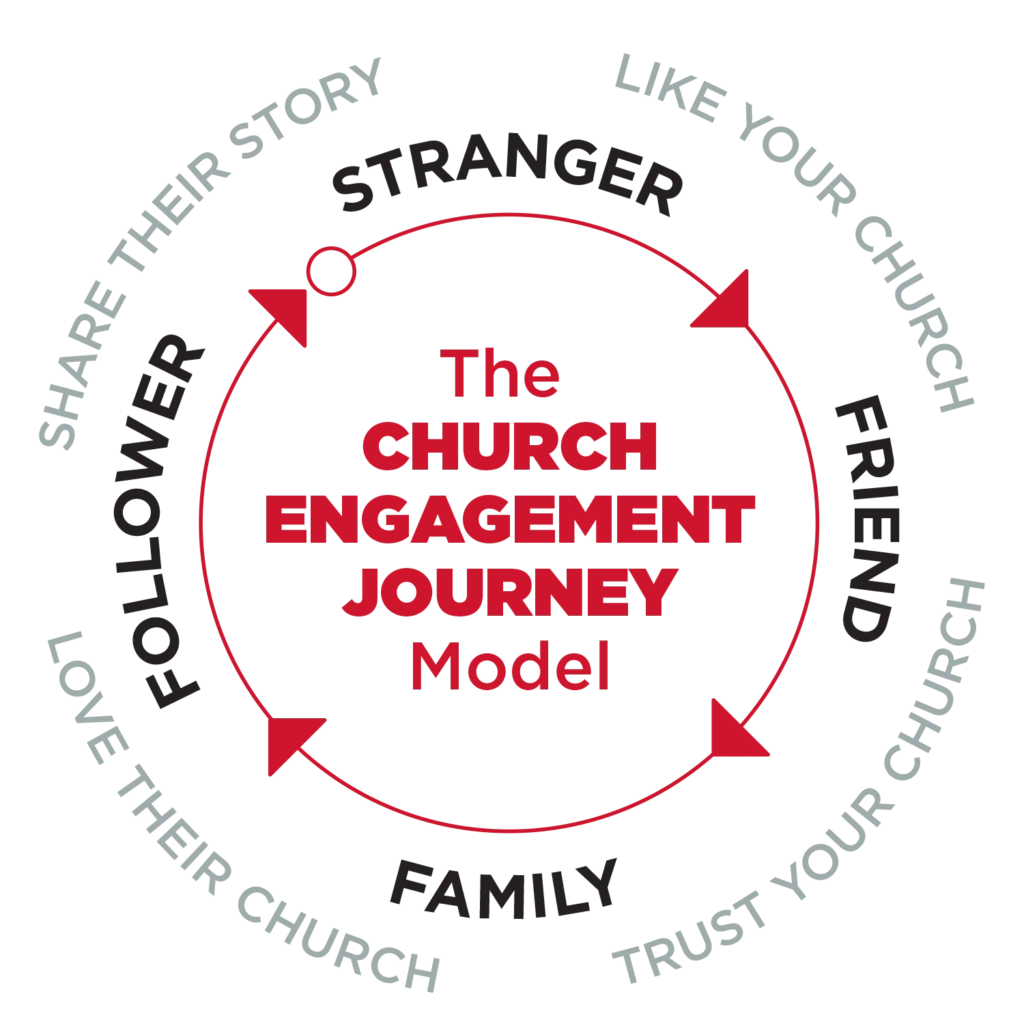YOU GOT THE POSITION... YOU'RE THE LEADER... NOW WHAT?
Menu

In our last post, we discussed how strategy utilized well can bring order to the chaos of creation.
Let’s turn our attention to the next phase in the church life cycle: Orchestration.
If you missed the previous posts, read them here:
Churches planted or campus locations launched with intention and attention to detail find themselves leaving the Creation Phase for Orchestration. While creation can happen with relative quickness, orchestration often takes much, much longer.
In the most simple terms, orchestration is where churches and other organizations form more robust strategies, methods, and systems to allow for scale. Growth requires health. Similarly, stagnation comes from a lack of health. For a church, solid systems paired with a clear strategy and approach create the conditions most conducive for health and growth.
If orchestration is tied to health, defining church health is vital before determining strategies, plans, and systems.
So what makes a healthy church?
Search around, and you’ll find plenty of answers, like:
Healthy and growth feel synonymous. Or, at a minimum, correlated. With that in mind, healthy churches seem to be growing churches. Not necessarily numeric growth at all times, but certainly most of the time. Health in a church means growth in and around the church.
I think of health in church like this: Healthy churches increase the faith of the congregation, community, and, eventually, the world.
For our discussion, let’s consider those on an active database a “congregation.”
Healthy churches engage intentionally with the congregation. A healthy church proactively, strategically, and systematically provides and inspires opportunities for faith to grow. This happens best through an intentional discipleship pathway that leverages practical teaching, connected community, private disciplines, and personal ministry.
Healthy churches engage the community through evangelism or “outreach.” These terms may not be used as frequently today, but their connotations remain in thriving churches.
As Jesus told his disciples (and us), we are to “Go and make disciples of all nations, baptizing them in the name of the Father and of the Son and of the Holy Spirit, and teaching them to obey everything I have commanded you.” – Matthew 28:19 – 20a
This “Great Commission” is holistic discipleship, requiring going and growing.
Healthy churches are focused on reaching the unreached and edifying the found. While most churches tend to err on one side or the other, a holistically healthy church focuses on both, resisting the urge to commit too fully to one.
Continuing our Great Commission work means engaging beyond our community. This may mean surrounding areas first. It may mean supporting missionaries. Or even engaging the congregation in mission work.
I know this is a straightforward summary of church health, but to summarize our summary, healthy churches progress through the Orchestration Phase by intentionally and systematically supporting the faith growth in their growing congregation, community, and eventually beyond.
I’m so glad you asked. The short answer is you don’t. At least not directly. But the church organizationally plays a significant role in the faith growth process.
How?
This is what churches should do. Churches should create the context for God to do what only he can do. When it comes to salvation and growth, God does all the work. But churches help create the context for God to do what only he can do. We can’t actually “make” anything, but we certainly can create a model conducive to discipleship.
Therefore, healthy churches almost exclusively have an intentional and systematic discipleship pathway that inspires steps of faith. This is how you orchestrate faith growth. You don’t force it, but you encourage it by creating incremental, sequential, and helpful steps.
In our previous post, we said that, in a church, a lack of thought-through ministry modeling limits the church’s ability to reach people and support the faith growth of those in the congregation. This is such an important truth to embrace. A church hoping for success rarely finds it because hope is not a strategy.
You see this all the time in churches. Passionate pastors launch the church (or campus location), but passion doesn’t scale. Passion alone isn’t enough to mature a model. Guests attend church, but their experience isn’t sufficient to convert them to contributing family members. Strong leaders appear and quickly disappear due to the lack of organizational thinking. Passion can be contagious, but a lack of forward faith progress eventually limits church health.
A healthy church must create a ministry model that inspires those far from God towards God while offering growth steps for the congregation. This is highly strategic! Nothing like this can happen by accident. You’ve never stumbled into a healthy body weight! And people don’t slip into a growing faith relationship with God.
An intentional discipleship strategy begins where the Great Commission begins – “going” to the unreached.
What I’m about to show you is a very simplistic version of the Church Engagement Journey Framework that I teach in the Rethink Your Church Model Masterclass. I developed this approach after studying our current community culture and effective discipleship journeys. You can read more about church engagement here.
Quick Note: You’re about to see what the marketplace calls a “Customer Journey.” Customer journeys have been utilized for decades. Conceptually, a customer journey is the path a company creates to engage non-customers to become customers and eventually raving fans. If you’re tempted to stiff-arm a marketplace concept like this, hang tight. Discipleship is nothing more than a journey with God through sequential steps of faith. That’s nothing more than a spiritual “customer” journey.

A healthy discipleship journey begins with those who still need to engage on a faith journey. For simplicity, we’ll call them Strangers.
As we said, churches can’t force a personal faith journey, but they can create conditions conducive to the journey. This is precisely what we need to do to reach and eventually engage Strangers. Like a company, reaching Strangers means understanding who they are and, more importantly, why they are estranged from your church.
Research with this group offers us painful clarity: Most non-believers don’t like Christians and don’t trust the church to be helpful or relevant.
Ouch.
That’s not the beginning we’d prefer, but it is where most Strangers are.
Where can we start? We could attempt to remodel our church after other churches that have shown some success of late, but these churches are few and far between. And, if we look closely enough, most churches that are “thriving” today have not grown from conversion but transfer. If your church grows while the church down the street closes, that’s not growth. That’s sheep swapping. We must find a way to engage with those far from God (and the church) and inspire them along a discipleship pathway.
Enter the Customer Journey concept. Many companies, businesses, and service providers have overcome similar issues in the marketplace.
When a company begins or a product is launched, virtually all potential customers need to be made aware the company and product exist. Potential customers don’t necessarily like the company or trust the product — yet. Great businesses understand this, so they use a Customer Journey to introduce strangers to the product, service, and company.
Until recently, churches didn’t need a holistic customer journey. But those times are long gone. The death of cultural Christianity has created a need for churches to back up our ministry model to engage Strangers who don’t like or trust us. If we hope to engage and inspire a discipleship journey, as we’ve already said, we must begin where these individuals emotionally exist with God, us, and our church.
So back to the research. Strangers don’t like us. Our first step is to become likable.
I’ve written extensively about this in prior posts. Check these out to dig a bit deeper into the “how” of engaging strangers:
Also, I work with dozens of churches every month to help build a better discipleship pathway. Perhaps the Rethinking Your Church Model Masterclass Experience is exactly what you need. The next session begins the week of April 9. SPACE IS LIMITED. Learn more HERE.
In a Customer Journey, friends know about you and like you, but they don’t yet trust you. Once again, the research proves churches have their work cut out for them.
You may have a positive brand in your community, but that doesn’t mean anyone outside your church will show up, much less engage. There’s a reason the self-help industry has grown to an estimated 15,000 self-help books published in the United States each year and approaching $14 billion. It’s not that people aren’t looking for help. It’s that they don’t see your church as helpful.
Establishing and growing trust is the secret to moving people along our engagement journey.
In addition to the links above, this post may help, too:
As trust grows, people begin to see your church as their church. This is more than swapping a pronoun. At this point, we work to help people take that trust we’ve established and engage more deeply in more traditional spiritual formation steps, like groups, mentoring, Bible study, generosity, and volunteerism.
People fall in love with things (people, companies, etc.) that love them and improve their lives. I love Stance socks. They’ve changed my life for the better. Same with Vuori joggers. Not to sound trite, but when your church helps move people toward God through sequential and spiritual steps of faith, they fall increasingly in love with their church. This love grows stronger the more their faith grows richer. And the more their family grows together and towards God.
The key emotion for our church family is “love.”
Finally arriving at the pinnacle of our faith engagement journey: Followers. Followers are raving fans. These people so love their church and their faith experiences through their church that they cannot stop telling everyone they know (and don’t know) about their church.
Followers of Jesus live for others and share their story and church with them. Strategically, the church’s job is to partner with followers to create online and in-person experiences worthy of being shared and experienced.
I get it. And to make things worse (sorry), while you create and implement a discipleship pathway, you’ll also need to create a staffing and volunteer structure to support the strategy, incorporate volunteer systems for recruiting, background checks, training, and retaining, financial and giving systems, HR, legal, and a few other things.
I get it. It’s a lot. I’ve been there and done it all.
But it’s worth it. Because people are worth it. Faith is worth it.
You didn’t start your church to experience mediocrity. You’re in church leadership because you believe the church’s mission is the most important in the world. I would agree with all of my heart.
Rather than feel overwhelmed, start. I’d be more than happy to help. Here are a few options:
Thanks, and until next time,

